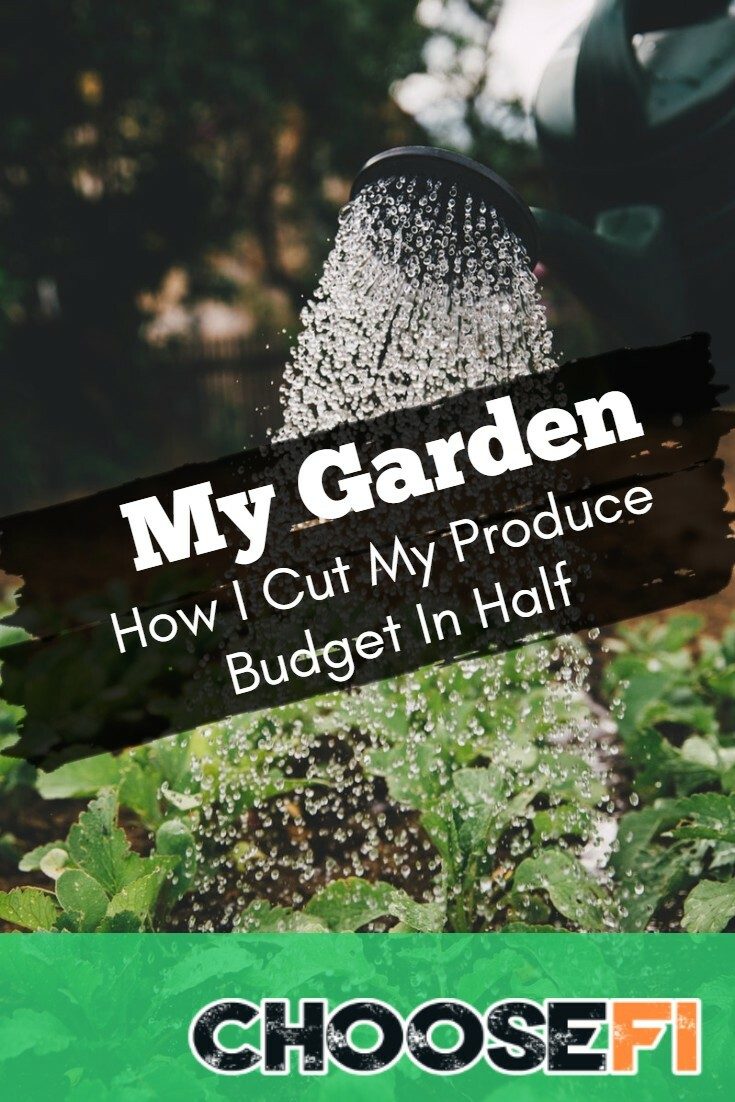Right about now, my garden really is in high gear and I am harvesting a belly filling and grocery bill neutralizing amount of produce. This will be the third summer we have been in our house and we have been able to have a productive garden each year, easily eliminating the need to purchase vegetables from about May through October.
Can everyone do it on the scale that we do it? Maybe not, but certainly everyone can make a concerted effort to produce some level of produce and reap the rewards of their labor! I will talk you through what we did to setup our garden, and why it has been so productive. Also, I will talk about what you can do to start your own little garden now and still get some veggies this year.
No Space?
If you don’t have a garden currently, it is fairly easy to create a space to grow some vegetables. During the winter, I grow sprouts in planters, anything with about two inches of dirt can produce sprouts easily. If you don’t have yard space to devote to a garden, you can use pots or buckets to house your produce. The major difference between the two is the watering requirement. With a bucket or planter, you must be careful to not over or under water your plants. Because the dirt is above the ground, it is much easier for it to dry out. On the flip side, it is much easier for the plant to be over watered since it can’t drain into the surrounding dirt either. When watering your plants in pots, it’s good to let the dirt dry out for a day or so and then to water it to a level of consistent moisture down about an inch into the soil. If the soil in your planter is blowing away with gust of wind or is constantly dripping wet, you need to take action to save your plants!
You Have Some Yard Space?
One of the non-negotiable items when we were searching for our house a few years ago was proper positioning with the sun and enough space for a large garden. Therefore, when we moved into the house, one of my first projects was to build a raised bed garden. This was easier to do than digging a garden in the dirt already since I wasn’t competing with the grass that has been growing there for years. I created a large box on the ground, about eight inches high (since I had 2×8 boards laying around) and filled it with dirt. Before I added the dirt, I laid down a bunch of cardboard boxes to smother the underlying grass. Long after the grass died, this cardboard started to decompose, but not before leaving me with a weedless garden where lush grass used to be.
To get my garden started, I purchased dirt from Walmart. I got the cheapest dirt they had, which was actually a humus and manure mix. This definitely supercharged my garden for the first year, which was an exciting way to start gardening in the new place! Each fall, I pile on the leaves I rake up from our trees and run over them with a lawn mower. This provides new organic matter which breaks down over the winter, while also providing a mulch-like cover to the soil so I don’t lose as much soil or nutrients to the rain.
Related: Our Homesteading Journey Begins!

What Do I Plant In the Garden?

Each year, I change a few of the plants I grow, but I have a core selection of plants I grow every year. Some of the depends on our diet and preferences, but it also depends on my success with growing them. There is no reason to keep planting plants that fail, providing only frustration. I am trying to learn from my mistakes and that sometimes means that I will give up on a varietal or species altogether.
Definites
Tomatoes, kale and green beans are perpetual choices for the garden. They generate so much for the space they take, I don’t see it as an option to stop planting these.
I grow tomatoes from seed each winter (I would say this a more advanced level), so I don’t have to pay the crazy prices that stores charge for tomato transplants. If shopping for tomatoes, look for the six-packs rather than the individual tomato plants. Even if you have to purchase tomato transplants, the savings you will get from growing these far outweigh the cost.
Kale is almost like a weed. It is easy to start from seed and pretty hard to kill. Compared to the other leafy greens, kale is far and away the easiest and most productive that I have tried. We use it instead of lettuce for salads, saute it like we used to do with spinach, and mix it in smoothies too. We have been growing kale since before it was a “superfood” but I’m happy to see that we’ve made a “super” healthy choice!
Green beans are the most productive plants we have in our garden. They are also the best bang for your buck in terms of savings at the grocery store too. Last year, we planted about 120 row-feet of green beans (six rows at 20 ft long) and ate fresh beans from June to October, froze several gallon bags worth and canned 10 or 12 jars of dilly beans. I’d say that production for the amount of space provided is unparalleled.
Maybes
I have been planting squash for years, but they take up so much space and I usually have pest problems, reducing my harvest. I am considering not planting them going forward, save for one variety–the Tromboncino squash. This squash grows like a vine and I am able to plant it on the edge of my garden and let the vine grow out into my yard. It also has better defenses against the squash vine borer bug that tears up my other squash plants. Finally, the squash can be used while they are young, like a zucchini, or I can let them mature and they become a winter squash like a butternut.
I can’t seem to get spinach to grow in this garden. My dad has no problem at all growing spinach and often gives me what they can’t eat. This year, I planted about 12 row-feet of spinach and got two spinach plants to come up. Luckily, I planted the last of my seed and won’t purchase any more going forward. If we start a garden elsewhere, I may give it a shot again but I won’t have high hopes.
I have been planting peas for years and they are one of the first plants that come up in the spring. However, I got some variety of peas a few years ago that had to be shelled before eating them. This was way too much work and I gave up on that variety. This year, I got new seeds, for snap peas. That way, I don’t need to shell them before cooking and eating. I think the snap peas will have a place in the garden going forward.
Never again
I was really excited to try planting broccoli since this was one vegetable that we were always purchasing in the store. However, it takes up a ton of space and I had a real problem with bugs. I did get produce out of the plants but the heads of broccoli were significantly smaller than those sold in stores, so the reward was not worth the effort.
This year, like it or not, I have had a ton of pumpkin plants come up. I didn’t plant them on purpose, instead, I chopped up our pumpkins from the fall last year and added them to my garden compost. These plants take over everything in the garden! They have overrun my tomato plants, are spreading out in the yard and have shaded out my green beans. It’s cool to see pumpkins the size of soccer balls already, but I don’t think it’s worth sacrificing the space and production of my favorite plants for decorative pumpkins.
The main takeaway for me is that trial and error is necessary in your specific garden. Don’t be put off by failures this year, just try something new next year if you’re not having good production. If I were to start from scratch, I would do some leafy greens (kale!) and a few tomato plants to get started. Green beans require a bit more space to make multiple meals a week out of, so they would be my third choice. Take your time getting started and note that some varieties of each of these plants may do better in your planting zone so do a bit of research before plunging into it.
Related Articles
- My Top Two Comfort Food Instant Pot Recipes
- My Top Two Instant Pot Soup Recipes For Fall
- ChooseFI’s Favorite Tips to Save on Landscaping Costs




